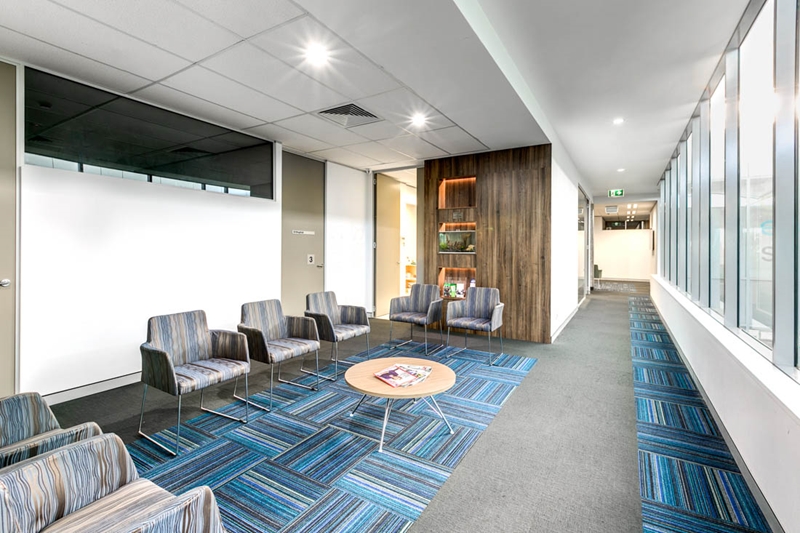The way we design spaces has an effect on the health and safety of the people inside them. For medical and healthcare construction projects, this thinking becomes doubly important, as a positive health outcome for patients is the ultimate goal for any practice or specialist.
Choosing the right type of flooring material is an important element of healthcare construction. For waiting rooms and other areas patients spend a lot of time in, here are some important considerations when choosing flooring materials.
In patient-centred design, there are many factors that come together to designing the perfect space.
What are my primary concerns when choosing a flooring material?
First and foremost, flooring in any construction project has to comply with building code regulations, which may vary from state to state. For healthcare facilities, an additional concern is the prevention of sickness and disease. As such, how easily a surface can be cleaned will have an effect on infection control and help practitioners choose a suitable flooring type.
What questions I should be asking?
In patient-centred design, there are many factors that come together in designing the perfect space.
- Who is at risk or susceptible to infection?
- How will I clean this surface?
- Is this surface anti-slip? Is it anti-static or anti-conductive?
- Will my surfaces act as reservoirs, pooling either infection agents or cleaning products?
In this case, hard floor coverings stand out as the most suitable option. Material such as wood, vinyl, ceramic tiles and linoleum are all examples of surfaces that can be easily cleaned and maintained. Wood also introduces a natural element that helps patients feel calm.
However, what about the alternatives to hard flooring? What about carpet?
 What are the elements to consider with healthcare reception flooring?
What are the elements to consider with healthcare reception flooring?What’s the deal with carpet in medical practice design?
There are both advantages and disadvantages to using carpet in your practice.
On one hand, there is evidence of the benefit carpeted flooring has in terms of noise reduction, ease of walking and injury prevention from trips and falls. On the other hand, there is also evidence that because carpet is more difficult to clean thoroughly, it is susceptible to harbouring fungi and bacteria which may have a negative affect on patient health, according to the National Health and Medical Research Council.
The Council also points out that carpets should be avoided for this reason in places where patients are likely to be in direct contact with the floor, such as babies crawling on the floor, a common occurrence in waiting rooms and receptions.
Whether or not carpet is the best option in your waiting room will depend on the unique situation of your medical practice. In this instance, consulting with healthcare construction experts and relying on their combined years of experience with other medical fitouts will help you come to an informed decision.
To find out more, reach out to the experts at Space for Health.



